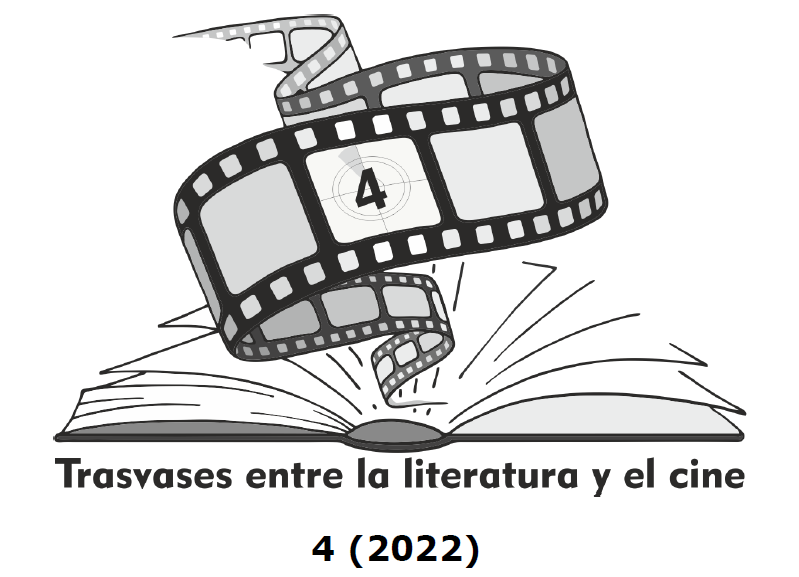De las barricadas de París a la insurrección samurái: la transformación cultural de Les Misérables en el cine mudo japonés
DOI:
https://doi.org/10.24310/Trasvasestlc.vi4.14682Palabras clave:
intertextualidad, adaptación intercultural, Victor Hugo, literatura francesa, cine japonésResumen
Desde los inicios de la era Meiji (1868-1912), la novela Les Misérables de Victor Hugo tuvo una gran influencia en la literatura, el cine, y la política japonesa. Tras la publicación de la primera traducción en japonés, la obra llegó a ser tan popular que los estudios cinematográficos produjeron entre 1910 y 1931 cuatro películas mudas basadas en la novela. En este estudio se analizan estas adaptaciones interculturales, se examina la transformación cultural de elementos narrativos, y se describe de qué modo los intereses comerciales o estéticos de la industria, así como los cambios ideológicos y sociales experimentados por el país a lo largo de esas dos décadas determinaron la interpretación y la adaptación de la obra.
Descargas
Métricas
Publicación Facts
Perfil de revisores N/D
Información adicional autores
Indexado: {$indexList}
-
Indexado en
- Sociedad Académica/Grupo
- N/D
- Editora:
- Universidad de Málaga
Citas
ANDERSON, Joseph (1992), «Spoken Silent in the Japanese Cinema; or, Talking to Pictures: Essaying the Katsuben, Contextualizing the Texts», en A. Nolletti y D. Desser (eds.), Reframing Japanese Cinema: Authorship, Genre, History, Bloomington, Indiana University Press, págs. 259-310.
ANÓNIMO (1923), «Aa muj?», Kinema Junp?, 134, pág. 5.
ANÓNIMO (1929), «Aa muj? zenpen to Kohen», Kinema Junp?, 1929, pág. 72.
ARAGAY, Mireia (2005), «Reflection to Reaction: Adaptation Studies Then and Now», en M. Aragay (ed.), Books in Motion: Adaptation, Intertextuality, Authorship, Amsterdam-New York, Rodopi, págs. 12-34.
BERNARDI, Joanne (2001), Writing the Light: The Silent Scenario and the Japanese Pure Film Movement, Detroit, Wayne State University.
DYM, Jeffrey (2000), «Benshi and the Introduction of Motion Picture to Japan», Monumenta Nipponica, 55/ 4, págs. 509-536.
FUJIKI, Hideaki (2013), Making Personas: Transnational Film Stardom in Modern Japan, Cambridge, Harvard University Asia Center, Harvard University Press.
GERAGHTY, Christine (2008), Now A Major Motion Picture: Film Adaptations of Literature and Drama, Lanham, Rowman and Littlefield.
GEROW, Aaron (2012), «The Sword and The Screen: The Japanese Period Film 1915-1960» Film Series Commentaries, 1. [ En línea: http://elischolar.library.yale.edu/ceas_film_series/1. Fecha de consulta: 15/09/2021]
HUGO, Victor (2015), Los miserables, Madrid, Alianza editorial.
HUTCHEON, Linda (2006), A Theory of Adaptation, London- New York, Routledge.
JACOBY, Alexander, A Critical Handbook of Japanese Film Directors: From the Silent Era to the Present Day, Berkeley, Stone Bridge Presss.
JANEIRA, Armando M. (2016), Japanese and Western Literature. A Comparative Study, Tokyo, Tuttle Publishing.
KEENE, Donald (1984), Dawn to the West: Japanese Literature of the Modern Era: Fiction, New York, Henry Holt.
KOMATSU, Hiroshi (1996), «The Classical Cinema in Japan», en G. Nowell-Smith (Ed.), The Oxford History of World Cinema, Oxford, Oxford University Press, págs. 413-422.
MCDONALD, Keiko (2000), From Book to Screen, Arkmon, M.E. Sharpe.
PINAR, Alex (2020), «Àngel Guimerà en el cine japonés: intertextualidad intercultural en la adaptación de Kenji Mizoguchi del drama Terra Baixa», Trasvases entre la literatura y el cine, 2, págs. 241-252.
SCHOBER, Regina (2013), «Adaptation as connection – Transmediality reconsidered», en J. Brunh, A. Gjelsvick, y F. Hanssen (eds.), Adaptation Studies, London- New York, Bloomsbury, págs. 89-112.
SPALDING, Lisa, (1992) «Period Films in the Prewar Era», en A. Nolletti y D. Desser (eds.), Reframing Japanese Cinema: Authorship, Genre, History, Bloomington, Indiana University Press, págs. 131-144.
STAM, Robert (2000), «Beyond Fidelity: The Dialogics of Adaptation», en J. Naremore (ed.), Film Adaptation, New Brunswick, Rutgers University Press, págs. 54-76.
STAM, Robert (2017), «Revisionist Adaptation: Transtextuality, Cross-Cultural Dialogism, and Performative Infidelities», en T. Leitch (ed.), The Oxford Handbook of Adaptation Studies, New York, Oxford, págs. 239- 250.
SUZUKI Shigesabur? (1931), «Janbarujan», Kinema Junp?, 392, pág. 46.
THORNTON, Sybil Anne (2007), The Japanese Period Film: A Critical Analysis, Jefferson, McFarland.
VARLEY, Paul (2000), Japanese Culture, Honolulu, University of Hawai'i Press.
WADA-MARCIANO, Mitsuyo (2008), Nippon modern: Japanese Cinema of the 1920s and 1930s, Honolulu, University of Hawaii Press.
Publicado
Cómo citar
Número
Sección
Categorías
Licencia
Aquellos autores/as que tengan publicaciones con esta revista, aceptan los términos siguientes:
- Los autores/as conservarán sus derechos de autor y garantizarán a la revista el derecho de primera publicación de su obra, el cuál estará simultáneamente sujeto a una licencia Creative Commons Reconocimento-NoComercia-Compartirigual 4.0 cuyo texto completo puede consultar en <http://creativecommons.org/licenses/by-nc-sa/4.0>
- Los autores/as podrán adoptar otros acuerdos de licencia no exclusiva de distribución de la versión de la obra publicada (p. ej.: depositarla en un archivo telemático institucional o publicarla en un volumen monográfico) siempre que se indique la publicación inicial en esta revista.
- Se permite y recomienda a los autores/as difundir su obra a través de Internet (p. ej.: en archivos telemáticos institucionales o en su página web), lo cual puede producir intercambios interesantes y aumentar las citas de la obra publicada. (Véase El efecto del acceso abierto).
Es responsabilidad de los autores/as obtener los permisos necesarios de las imágenes que están sujetas a derechos de autor.
Esta revista electrónica está editada por la Editorial de la Universidad de Málaga (UmaEditorial), siendo necesario citar la procedencia en cualquier reproducción parcial o total.








22.png)











